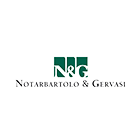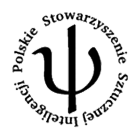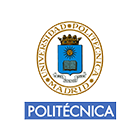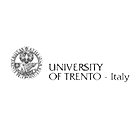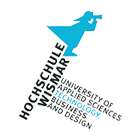
Take a stroll in the Grunewald forest
Grunewald is Berlin’s largest forested area, to the south-west of Charlottenburg and easily accessible via S-bahn. Pack a picnic and head down here for a day of tranquil respite from the bustle of the city. Venture through the woods by foot, bicycle or on horseback and, if weather permits, take a dip in the clean waters of Schlachtensee or Wannsee, the nearest of the forest’s several freshwater lakes. Look out for Teufelsberg, a man-made hill rising above the woodland, constructed by the Allies after World War II from the city’s rubble. Although there’s no general access to the hill, you can get to the top of the hill by going on a guided tour: English tours start at 1.30pm on Sundays (booking essential).

Spend a day on Museum Island
At the eastern end of Unter den Linden is Museum Island, a UNESCO-listed World Heritage Site lying in the middle of the Spree. It’s home to five of Berlin’s most important museums: two not to be missed are the Neues Museum, home to the Egyptian bust of Nefertiti and the spectacular Pergamonmuseum, one of the world’s major archaeological museums. Within it you walk through a series of astounding structures, from a partial recreation of the Pergamon Altar (170–159 BC) to the two-storey Roman Gate of Miletus (29 metres wide and almost 17 metres high) and the Ishtar Gate of Babylon, dating from the reign of King Nebuchadnezzar (605–563 BC). Tucked away upstairs is the Islamic Art collection, a treasure trove. A day ticket is available permitting entrance to each museum.

Hunt down bargains in Mauer Park
Berliners embrace their green spaces and the long strip of grass along the middle of Prenzlauer Berg’s Mauerpark (open daily from 8am–sunset) is best known not as a relaxing spot but a mecca for energetic market-lovers. The park hosts a massive flea market on Sundays, with vendors selling bargain bicycles, clothes, food, souvenirs, records, pianos and furniture.

Ascend to an iconic vantage point
Largely owing to World War II, Berlin’s architecture has a fascinating range, from the historical to high modernism and more controversial postmodern projects. A visit to the Reichstag, the home of the German Parliament, provides the perfect overview. Opened in 1894, its renovation was masterminded by British super-architect Norman Foster and completed in 1999. The roof is an entirely glass structure, allowing for a panoramic view of the city right from the centre of government. Entrance to the roof is free but you must register in advance; once you’re in make this a totally informative experience by plugging into the audio tour and heading to the open roof for an overview of the sites all around. Alternative views can be found by taking Europe’s fastest elevator to the Panoramapunkt on the 24th and 25th floors of the Kollhoff Tower in Potsdamer Platz. Over in the east of the city is Fernsehturm, rising over 200 metres above Alexanderplatz. The iconic tower is Europe’s fourth tallest free-standing structure and the stainless steel sphere contains a revolving restaurant and viewing gallery. On clear days visibility can reach 40 kilometres.

Indulge in some DDR ‘Ostalgia’
Soviet occupation of East Berlin ended in 1990, and today the DDR Museum offers a snapshot of life in the old days. The interactive museum allows visitors a truly hands on experience for both children and adults alike: root through drawers of East German memorabilia, mimic a Stasi officer and listen in on a bugged flat. Out on the streets you can take a unique tour of the city by renting a Trabant, the classic car produced in former East Germany, now painted in bright colours by the Trabi Safari company.

Explore Berlin's Jewish history
The Jüdisches Museum presents the story of Berlin’s Jewish population through the Museum’s own architecture. The newest and most eye-grabbing section of the building was designed by controversial Jewish architect Daniel Libeskind. Its shape is based on an exploding Star of David, with its interior spaces disappearing into angles, so the museum experience is more about the effects of the space than the documents and artifacts. Across Oranienburger Straße is the Neue Synagogue: built in the late 19th century this building survived World War II, and its golden dome stands out from afar. For more of an emotional way into history, walk night or day through the Denkmal für die Ermordeten Juden Europas – also known as the Holocaust Memorial. This memorial to the murdered Jews of Europe takes the form of 2,711 blocks of varying heights arranged across the area of a housing block.
MORE BERLIN MUSEUMS

Walk the Berlin Wall
The Wall was mostly demolished between June and November 1990 although a restored stretch remains along the southern border of Wedding and Mitte. Visit Checkpoint Charlie, the famous east-west border control during the Cold War and now a tourist centre, for comprehensive display boards telling the Wall’s story. For more of a visual history, take a walk along the Wall by the Spree, where it runs between the Freidrichshain-Kreuzberg districts. Whereas graffiti has been removed from the northern section of the Wall, the one-mile stretch known as the East Side Gallery is dedicated to art and preserves the paintings made on the eastern side when the Wall was brought down. Although attempting to preserve the spirit of the time, an argument blew up when the restoration project of recent years was seen to overstep the mark, with original artworks being painted over without the artists’ permission.
SEE TIME OUT’S BERLIN WALL HIGHLIGHTS

Take a Photoautomaten selfie…
Posing for four shots in Berlin’s Photoautomaten is an almost obligatory activity. These black and white photo booths are open all hours and scattered across the city. The photos only take a few minutes to print and provide a brilliant souvenir of your time in the city. Draw back the curtain and pose for posterity or cram in your friends for a fun set of snaps.

Peruse the Bauhaus Museum
You’ll find out that everyone can be a designer at the Bauhaus Archiv, which offers a total insight into the development of the utilitarian art school that came out of Weimar Germany. The school’s founder, architect Walter Gropius, drew up plans for the elegant white building that now houses the museum. Its permanent exhibition displays furniture, ceramics, prints, sculptures, photographs and sketches, all created in the workshop. Active from 1919, the school was pressurised to close in 1933 by the incoming National Socialist government, fearful of the institute as a breeding ground for subversive ideas and ‘degenerate art’, as they deemed it. You might want to join a free tour of the collection (every Sunday at 3pm) or take a bit of history home and leave via the gift shop, which stocks Bauhaus products such as Wilhelm Wagenfeld’s iconic lamp.

See the sights by bike
If you’re hard-pressed for time, get on two wheels for a quickie tour of the must-do sights. Central Berlin is well supplied with bike-rental outlets, and the city has a welcoming cycle culture, complete with cycle lanes and cyclist signs at the traffic lights. This route covers a micro tour of the big sights clustered conveniently close to each other, beginning and ending with sites of power. Start at the Reichstag and its adjacent complex of nineties Parliamentary buildings, then head across to the leafy paths of Tiergarten, up to Brandenburg Tor, the Holocaust Memorial, Potsdamer Platz, Checkpoint Charlie and end with the Topography of Terror – an outdoor museum on the site of the wartime SS and Gestapo offices.
MORE OF BERLIN’S TOP SIGHTS AND ATTRACTIONS

Tackle Europe’s largest department store
A shopping tour of Berlin covers a lot of ground. North Mitte has recently risen as a key shopping district, counting scores of boutiques and independent retailers around Torstraße and Mulackstraße (view our shopping guide: Berlin's 20 best stores). Those in search of vintage clothing should venture further north to Prenzlauer Berg, to the areas many small and well-selected shops. Alternatively you can pay for the contents of your basket according to weight in a number of outlets: head westwards to Garage at Nollendorf Platz, or to the vast and musty Colours Kleidermarkt on Bergmannstraße. For oodles of vintage at bargain prices, the Humana chain of second hand stores is one to note, of which a big outlet is in Alexanderplatz. Friedrichstraße is the street for big name designer stores as well as KaDeWe, Europe's largest department store, which offers a fantastic range for those with a larger budget.
MORE BERLIN SHOPPING

Dance until sunrise
When it comes to partying, Berlin is more of a 48-hour than a 24-hour city, with weekends stretching well into weekdays. Head to Berghain/Panorama Bar, on the border between Kreuzberg and Friedrichshain: this former factory is the bedrock of European techno. Alternatively, the ramshackle place that is Salon Zur Wilden Renate nods at more of an underground house party vibe, with three main dance rooms but other corners tucked away off the sides and mezzanine levels for nosying about. It’s truly an adventure playground, with a labyrinth underground (see Hidden Berlin). Watergate is also suffuse with house heritage – the downstairs Water Floor is particularly impressive with its panorama windows looking directly out onto the Spree, as well as a floating deck terrace for watching the sunrise over Kreuzberg.
MORE BERLIN NIGHTLIFE

Immerse yourself in Berlin’s art scene

Delight in the Berlin Philharmonic
The Berlin Philharmoniker is widely regarded as one of the world’s foremost symphony orchestras. The Philharmoniker tour extensively and are currently conducted by Britain’s Sir Simon Rattle, whose artistic license means that the programme bristles with contemporary and classical choices. Classical music enthusiasts are advised to check that their visit to Berlin coincides with the Orchestra playing at home. The concert hall itself, designed by Hans Scharoun, is an iconic yellow building: on the inside, a sleek 1960s aesthetic meets with superb acoustics.
SEE TIME OUT’S CLASSICAL AND OPERATIC HIGHLIGHTS

Relax by the Spree
Berlin enjoys glorious sunshine come summer, and after the notoriously snowy winters, Berliners certainly make the most of it. Although hundreds of miles from any coastline, you’ll find sun-seeking improvisation on every corner. Bars such as Yaam and Chez Jacki line the banks of the Spree to the north while Club der Visionäre sits on stilts on an inlet to the river on the border of the districts of Kreuzberg and Treptow. The Badeschiff gets very busy on the warmest summer days, but after a day in the heat, take a plunge in this barge-cum-chlorinated swimming pool to cool off. Get a drink from the bar and colonise a warm patch on decking or sand as DJs enter to play out the evenings. Fortunately, in the winter the area is transformed into an indoor complex with a sauna in riposte to the bitter weather.

Get set for the Olympic Stadium
The Olympiastadion exemplifies fascist taste in architecture. This arcaded classical oval of pale Franconian stone is simple but grandiose and on an epic scale. Its greatest claim to fame however came during the 1936 Olympics, which had been intended by the National Socialist government to be a showcase for Aryan triumph. Instead the stadium was the spot where black American athlete Jesse Owens won four gold medals, emphatically disproving Hitler’s ideas about racial superiority in front of the world’s media. The original design survived World War II bombs and demolition threats, before undergoing a major refit for the 2006 World Cup: now a hovering disc leaves the central structure open to the sky.
MORE OF BERLIN’S TOP SIGHTS AND ATTRACTIONS

Wolf down a classic currywurst
You’d be fooled into thinking Berlin is all about the mad dash if you went by the fact it is bursting at the seams with take-away joints. Currywurst is the idiosyncratic combination of pork sausage, cut into slices, smothered with a mixture of ketchup and curry powder and then served with a bread roll or fries. This might sound like a confusing mouthful, but in Berlin it’s a culinary institution, to be seen being scoffed by commuters, students, boozers and tourists alike. Konnopke’s Imbiss on Schönhauser Allee has been serving Currywurst since 1930. The veggie staple comes in the shape of Falafel: deep-fried chickpea balls to be specific. These beauties are served up with salad in flatbread and drizzled with yogurt or tahini, reflecting the presence of the Turkish population here.
MORE PLACES TO TRY LOCAL CUISINE

Anthropomorphise at Berlin Zoo
For a family outing or a date to the sound of exotic bird cries, visit the Zoologischer Garten & Aquarium in the Tiergarten. This is the most popular zoo in Europe and the oldest zoo in Germany, having opened in 1841 on the site of the King Frederick William IV’s pheasantry. Situated in beautifully landscaped gardens with plenty of spots for a picnicking, the zoo is an important scientific resource as well as being rich in entertainment value, containing almost 14,000 creatures, among them rare and endangered species. On a rainy afternoon, visit the aquarium, where you'll find extraordinary sharks, crocodiles, insects and amphibians. The dark corridors and liquid ambience, with colourful illuminated tanks and curious fishes floating by, are as absorbing as any art exhibit.

Enjoy a film at dusk
Kulturforum Potsdamer Platz or Friedrichshain Open Air Cinema, which often show original language versions of films in English. Screenings always prove popular so be advised to arrive early for the best seats (deck chairs). Refreshments are usually available and evening shows normally run from sunset into the dark.

Discover an older Berlin at Charlottenburg gardens
At the west end of the city, the charming palace and garden complex of Schloss Charlottenburg has the look of a mini-Versailles. Built as a summer retreat for Queen Sophie-Charlotte by her husband Friedrich I, the first king of Prussian, it was named after Charlotte following her early death in 1705. Following damage in the World War II, the residence has been restored to glory as the last surviving palace belonging to the powerful Hohenzollern family and the only royal residency in the city. Inside the highlight has to be the Neue Flügel (New Wing), where by Friedrich I’s successor, Frederick the Great made his mark. This suite of opulent Rococo state apartments includes the Golden Gallery, dripping in gilt, in contrast to the restrained classical winter chambers of the third inhabitant, Friedrich Wilhelm. The gardens outside however are also a gem: at the end stands a Pavilion designed by Karl Friedrich Schinkel, the architect behind the neoclassical Altes Museum on Museum Island. Outside, the lush gardens, modelled on the decadent style of Louis XIV of France, the Sun King, are the perfect place for a romantic stroll.




















